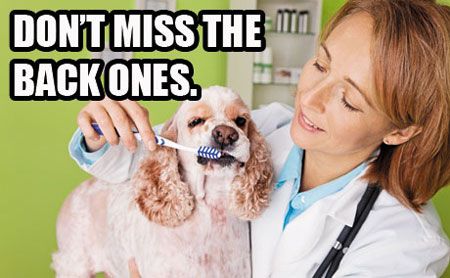Don't call it a dental!
Prioritize saving teeth with veterinary clients with a new acronym for dental work: COPAT.

The veterinary dental visit is not complete until a discussion is had with the client detailing how to keep their pet's mouth clean and how to minimize recurrence of the disease. Enter ... COPAT. (Getty Images)A few months ago, two veterinary dentists, a president and a past president of the American Veterinary Dental College, sounded off on their favorite terminology for careful examinations and subsequent treatment.
One of those dentists now wants to make a national pitch for a new acronym to cover it all and put preventive care first: COPAT, or comprehensive oral prevention, assessment and treatment.
After all, argues Jan Bellows, DVM, DAVDC, DABVP, FAVD, owner of All Pets Dental in Weston, Florida, prevention is already No. 1 for human dentists. He knows that's still not true for many veterinarians, even though he thinks the change is coming.
Client pushback not problem No. 1
Pet owners push back on the need for dental examinations, cleaning and treatment under anesthesia, sometimes for money reasons, sometimes because the value hasn't been explained, sometimes out of fear of anesthesia. But Dr. Bellows thinks the biggest road block to switching from a "treat now, prevent down the road" mentality to a prevention-first mentality is work flow.
"If dentistry is handled as it should be, the animal has to be anesthetized and probed, and we need radiographs for those 42 little patients in the dog's mouth, and 30 in the cat," Dr. Bellows says. "That means veterinarians need to find the time and space to do it."
Many practices have only one table, so where do the two to three dental procedures that need multiple extractions a day go?
"We're seeing this problem of not enough space for dental care in practices with veterinarians embracing wellness plans, where preventive dental work is included," he says. "Expense isn't as big a problem as it used to be in those situations, because the routine cleaning is covered-anesthesia, IV, blood work."
So, is there an easy solution to the workflow, staffing and time crunch in revving up more dental work? Probably not, but, readers, share with us at dvm360@ubm.com any ideas you have and we might share in the future.
"Years ago, we came up with oral ATP-oral assessment, treatment and prevention-which is exactly what we're often doing. We assess the patient and mouth under anesthesia, then we treat, and talk about prevention," Dr. Bellows says. "What many of us are doing today is different than what human dentists are doing. When our patients come to us, they have halitosis, indicating disease under the gum line already."
What he thinks the future could hold, however, is more like the human dentistry model, where patients show up once or twice a year for preventive examinations and cleanings, instead of waiting for problems to develop.
"We see dogs as young as 3 years old with periodontal disease," Dr. Bellows says. "How many people between 25 and 30 start losing their teeth? It doesn't happen, because we brush and floss and go to the dentist to have our teeth cleaned."
Ready to put client education out front on prevention with COPAT? Start brainstorming your favorite client messaging now. “Our dentistry service is now perfectly COPATcetic,” anyone?